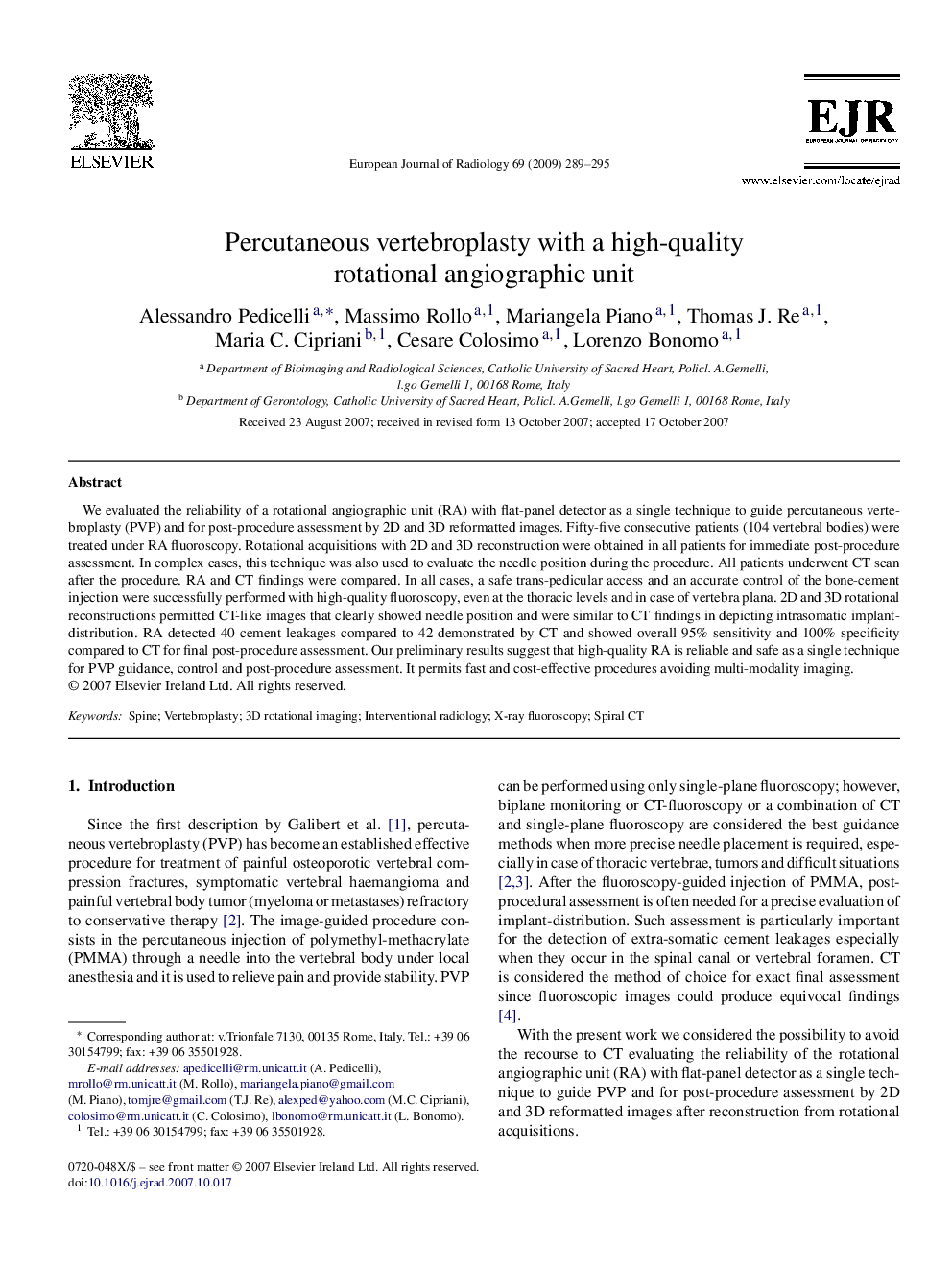| Article ID | Journal | Published Year | Pages | File Type |
|---|---|---|---|---|
| 4227759 | European Journal of Radiology | 2009 | 7 Pages |
We evaluated the reliability of a rotational angiographic unit (RA) with flat-panel detector as a single technique to guide percutaneous vertebroplasty (PVP) and for post-procedure assessment by 2D and 3D reformatted images. Fifty-five consecutive patients (104 vertebral bodies) were treated under RA fluoroscopy. Rotational acquisitions with 2D and 3D reconstruction were obtained in all patients for immediate post-procedure assessment. In complex cases, this technique was also used to evaluate the needle position during the procedure. All patients underwent CT scan after the procedure. RA and CT findings were compared. In all cases, a safe trans-pedicular access and an accurate control of the bone-cement injection were successfully performed with high-quality fluoroscopy, even at the thoracic levels and in case of vertebra plana. 2D and 3D rotational reconstructions permitted CT-like images that clearly showed needle position and were similar to CT findings in depicting intrasomatic implant-distribution. RA detected 40 cement leakages compared to 42 demonstrated by CT and showed overall 95% sensitivity and 100% specificity compared to CT for final post-procedure assessment. Our preliminary results suggest that high-quality RA is reliable and safe as a single technique for PVP guidance, control and post-procedure assessment. It permits fast and cost-effective procedures avoiding multi-modality imaging.
